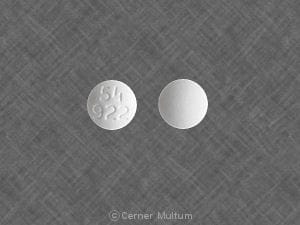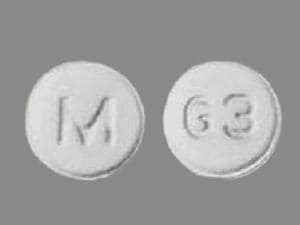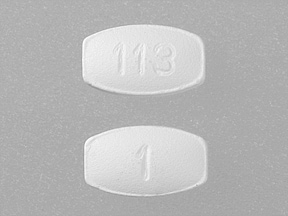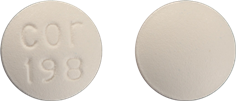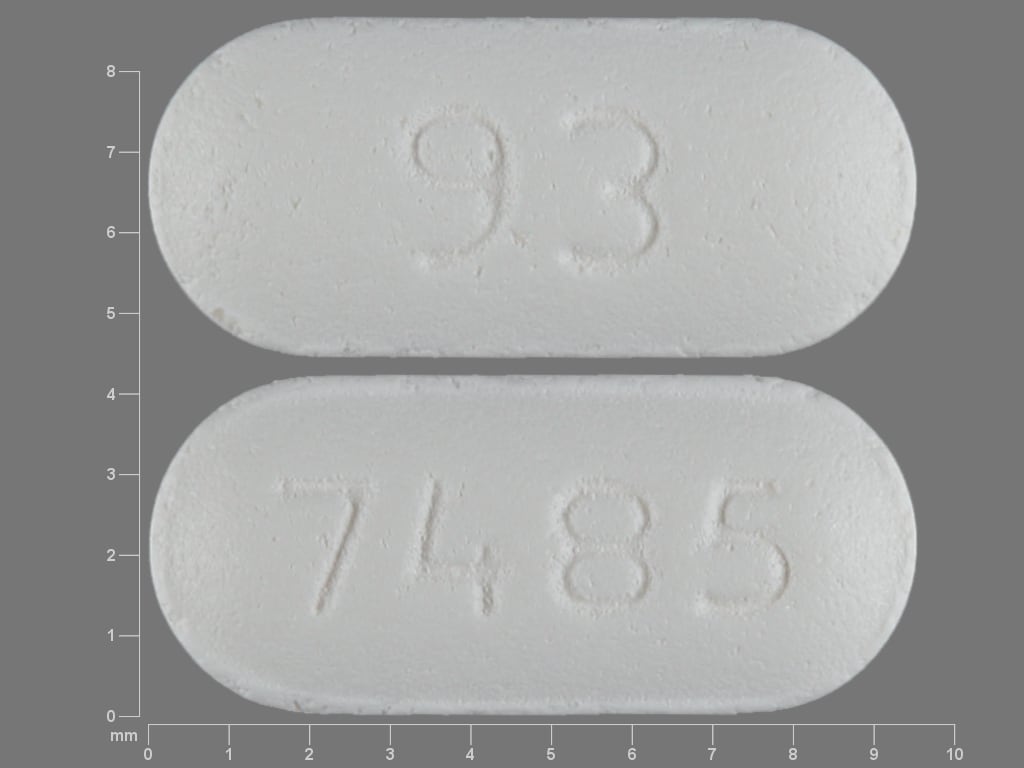Dosage Forms
Excipient information presented when available (limited, particularly for generics); consult specific product labeling. [DSC] = Discontinued product
Patch, Transdermal:
Sancuso: 3.1 mg/24 hr (1 ea)
Prefilled Syringe, Subcutaneous:
Sustol: 10 mg/0.4 mL (0.4 mL) [contains polyethylene glycol]
Solution, Intravenous:
Generic: 1 mg/mL (1 mL); 4 mg/4 mL (4 mL)
Solution, Intravenous [preservative free]:
Generic: 0.1 mg/mL (1 mL [DSC]); 1 mg/mL (1 mL)
Tablet, Oral:
Generic: 1 mg
Pharmacology
Mechanism of Action
Selective 5-HT3-receptor antagonist, blocking serotonin, both peripherally on vagal nerve terminals and centrally in the chemoreceptor trigger zone
Pharmacokinetics/Pharmacodynamics
Absorption
Oral: Tablets and oral solution are bioequivalent; Transdermal patch: ~66% over 7 days
Distribution
Vd: 2 to 4 L/kg; widely throughout body
Metabolism
Hepatic via CYP1A1 and CYP3A4 N-demethylation, oxidation, and conjugation; some metabolites may have 5-HT3 antagonist activity
Excretion
Urine (11% to 12% as unchanged drug, 48% to 49% as metabolites); feces (34% to 38% as metabolites)
Onset of Action
IV: 1 to 3 minutes
Time to Peak
Transdermal patch: Maximum systemic concentrations: ~48 hours after application (range: 24 to 168 hours); SubQ (extended-release): ~24 hours
Duration of Action
Oral, IV: Generally up to 24 hours; SubQ (extended-release): Remains detectable in the plasma for 7 days
Half-Life Elimination
Oral: 6 hours; IV: Mean range: 5 to 9 hours; SubQ (extended-release): ~24 hours
Protein Binding
~65%
Use in Specific Populations
Special Populations: Hepatic Function Impairment
Total clearance is decreased by about 50% in patients with hepatic impairment (due to neoplastic disease) compared to patients with normal hepatic function.
Special Populations: Elderly
Mean values were lower for Cl and longer for half-life.
Special Populations: Gender
Men had a higher Cmax, but there was no difference in AUC.
Use: Labeled Indications
Chemotherapy-associated nausea and vomiting: Prevention of nausea and vomiting associated with initial and repeat courses of emetogenic chemotherapy, including high-dose cisplatin (injection and tablets); prevention of nausea and vomiting associated with anthracycline/cyclophosphamide chemotherapy regimens; prevention of nausea and vomiting associated with moderately and/or highly emetogenic chemotherapy regimens of up to 5 consecutive days of duration (transdermal).
Radiation-associated nausea and vomiting: Prevention of nausea and vomiting associated with radiation therapy, including total body radiation and fractionated abdominal radiation (tablets).
Use: Off Label
Prevention of postoperative nausea and vomitingyes
Based on the Society for Ambulatory Anesthesia Consensus Guidelines for management of postoperative nausea and vomiting, granisetron may administered prior to the end of surgery to prevent postoperative nausea and vomiting.
Contraindications
Hypersensitivity to granisetron or any component of the formulation or to other 5-HT3 receptor antagonists
Canadian labeling: Additional contraindications (not in US labeling): Concomitant use with apomorphine
Dosage and Administration
Dosing: Adult
Note: Granisol oral solution has been discontinued in the US for more than 1 year.
Prevention of chemotherapy-associated nausea and vomiting:
Oral: 2 mg once daily up to 1 hour before chemotherapy or 1 mg twice daily; the first 1 mg dose should be given up to 1 hour before chemotherapy (with the second 1 mg dose 12 hours later). Administer only on the day(s) chemotherapy is given.
IV: 10 mcg/kg within 30 minutes prior to chemotherapy; only on the day(s) chemotherapy is given.
SubQ (extended-release injection): Moderately emetogenic chemotherapy or anthracycline/cyclophosphamide chemotherapy: 10 mg at least 30 minutes prior to chemotherapy on day 1 (in combination with IV dexamethasone on day 1 and [for anthracycline/cyclophosphamide chemotherapy] oral dexamethasone on days 2 to 4); do not administer more frequently than once every 7 days. May also be administered in combination with an NK1 receptor antagonist antiemetic regimen.
Transdermal patch: Prophylaxis of chemotherapy-related emesis: Apply 1 patch at least 24 hours prior to chemotherapy; may be applied up to 48 hours before chemotherapy. Remove patch a minimum of 24 hours after chemotherapy completion. Maximum duration: Patch may be worn up to 7 days, depending on chemotherapy regimen duration.
Adult guideline recommendations:
American Society of Clinical Oncology (ASCO; Basch 2011): High emetic risk:
IV: 1 mg or 10 mcg/kg on the day(s) chemotherapy is administered (antiemetic regimen also includes dexamethasone and aprepitant or fosaprepitant)
Oral: 2 mg on the day(s) chemotherapy is administered (antiemetic regimen also includes dexamethasone and aprepitant or fosaprepitant)
Multinational Association of Supportive Care in Cancer (MASCC) and European Society of Medical Oncology (ESMO) (Roila 2016):
Highly emetic chemotherapy:
IV: 1 mg or 10 mcg/kg (antiemetic regimen includes dexamethasone and aprepitant/fosaprepitant) prior to chemotherapy on day 1
Oral: 1 mg or 2 mg (antiemetic regimen includes dexamethasone and aprepitant/fosaprepitant) prior to chemotherapy on day 1
Moderately emetic chemotherapy:
IV: 1 mg or 10 mcg/kg (antiemetic regimen includes dexamethasone [and aprepitant/fosaprepitant for AC chemotherapy regimen]) prior to chemotherapy on day 1
Oral: 1 mg or 2 mg (antiemetic regimen includes dexamethasone [and aprepitant/fosaprepitant for AC chemotherapy regimen]) prior to chemotherapy on day 1
Low emetic risk:
IV: 1 mg or 10 mcg/kg prior to chemotherapy on day 1
Oral: 1 mg or 2 mg prior to chemotherapy on day 1
Prophylaxis of radiation therapy-associated emesis: Oral: 2 mg once daily within 1 hour of radiation therapy.
Prevention of postoperative nausea and vomiting (off-label use): IV: 0.35 to 3 mg (5 to 20 mcg/kg) administered at the end of surgery (Gan 2014).
Dosing: Geriatric
Refer to adult dosing.
Dosing: Pediatric
Note: Granisol oral solution has been discontinued in the US for more than 1 year.
Chemotherapy-induced nausea and vomiting (CINV), prevention: Pediatric Oncology Group of Ontario (POGO) guidelines (Dupuis 2013; Patel 2017): Note: POGO guidelines do not recommend a maximum dose as most studies did not cap the dose (Dupuis 2013)
Highly-emetogenic chemotherapy:
Infants <6 months: IV: 40 mcg/kg as a single daily dose prior to chemotherapy; used in combination with dexamethasone
Infants ≥6 months, Children, and Adolescents: IV: 40 mcg/kg as a single daily dose prior to chemotherapy; used in combination with dexamethasone and aprepitant (if no known or suspected drug interactions)
Moderately-emetogenic chemotherapy: Infants, Children, and Adolescents:
IV: 40 mcg/kg as a single daily dose prior to chemotherapy; used in combination with dexamethasone. For patients ≥6 months of age who cannot receive dexamethasone, use granisetron in combination with aprepitant (if no known or suspected drug interactions).
Oral: 40 mcg/kg/dose every 12 hours; used in combination with dexamethasone on chemotherapy days. For patients ≥6 months of age who cannot receive dexamethasone, use granisetron in combination with aprepitant (if no known or suspected drug interactions).
Low-emetogenic chemotherapy: Infants, Children, and Adolescents:
IV: 40 mcg/kg as a single daily dose prior to chemotherapy
Oral: 40 mcg/kg/dose every 12 hours on chemotherapy days
Postoperative nausea and vomiting, prevention: Limited data available: Children and Adolescents: IV: 40 mcg/kg as a single dose; maximum dose: 0.6 mg/dose (Gan 2014); ideal administration time in pediatric patients is not defined; in adults, administration is recommended at the end of surgery; in a granisetron pediatric PONV trial, doses were administered before the surgical incision (Cieslak 1996; Gan 2014). Note: QT prolongation has been observed at this dose in pediatric patients 2 to 16 years of age; monitor closely.
Reconstitution
IV: May be given undiluted or may be further diluted in NS or D5W.
SubQ (extended-release injection): Remove extended-release injection kit from refrigeration at least 60 minutes prior to administration. Allow the syringe and all other contents to warm to room temperature. Activate 1 syringe warming pouch and wrap the syringe in the warming pouch for 5 to 6 minutes to allow to reach body temperature. Do not substitute non-kit components for any components of the administration kit.
Extemporaneously Prepared
0.2 mg/mL Oral Suspension
A 0.2 mg/mL oral suspension may be made with tablets. Crush twelve 1 mg tablets in a mortar and reduce to a fine powder. Add 30 mL distilled water, mix well, and transfer to a bottle. Rinse the mortar with 10 mL cherry syrup and add to bottle. Add sufficient quantity of cherry syrup to make a final volume of 60 mL. Label “shake well”. Stable 14 days at room temperature or refrigerated (Quercia 1997).
Quercia RA, Zhang J, Fan C, et al. Stability of granisetron hydrochloride in an extemporaneously prepared oral liquid. Am J Health Syst Pharm. 1997;54(12):1404-1406.9194985
0.05 mg/mL Oral Suspension
A 0.05 mg/mL oral suspension may be made with tablets and one of three different vehicles (Ora-Sweet, Ora-Plus, or a mixture of methylcellulose 1% and Simple Syrup, N.F.). Crush one 1 mg tablet in a mortar and reduce to a fine powder. Add 20 mL of the chosen vehicle and mix to a uniform paste; transfer to a calibrated bottle. Label "shake well" and "refrigerate". Stable for 91 days refrigerated (Nahata 1998).
Nahata MC, Morosco RS, Hipple TF. Stability of granisetron hydrochloride in two oral suspensions. Am J Health Syst Pharm. 1998;55(23):2511-2513.9853637
Administration
Oral: Doses should be given up to 1 hour prior to initiation of chemotherapy/radiation
IV: Administer IV push over 30 seconds or as a 5-minute infusion
SubQ (extended-release injection): For subcutaneous administration only. Administer as a single injection at the back of the upper arm or in abdomen (at least one inch away from the umbilicus). Avoid using areas where the skin is burned, hardened, inflamed, swollen, or otherwise compromised. Inject slowly; may take up to 20 to 30 seconds (product is viscous, pressing the syringe plunger will not result in faster expulsion). A topical anesthetic may be applied at injection site prior to administration. Do not administer if particulate matter or discoloration is observed, if the tip cap is missing or has been tampered with, or the luer fitting is missing or dislodged. Remove from refrigerator at least 60 minutes prior to administration; remove from pack and activate 1 syringe warming pouch and wrap syringe with warming pouch for 5 to 6 minutes to allow warming to body temperature. Injection site reactions may occur; if injection site reaction is not yet resolved prior to the next dose, rotate injection site with next administration.
Transdermal (Sancuso): Apply patch to clean, dry, intact skin on upper outer arm. Do not use on red, irritated, or damaged skin. Remove patch from pouch immediately before application. Do not cut patch. Cover patch application site with clothing to protect from natural or artificial sunlight exposure while patch is applied and for 10 days following removal; granisetron may potentially be affected by natural or artificial sunlight. Do not apply heat (eg, heating pad) over or in area of the transdermal patch; avoid prolonged exposure to heat (may increase plasma concentrations).
Storage
IV: Store at 15°C to 30°C (59°F to 86°F). Protect from light. Do not freeze vials. Stable when mixed in NS or D5W for at least 24 hours at room temperature.
Oral: Store tablet or oral solution at 15°C to 30°C (59°F to 86°F). Protect from light.
SubQ (extended-release injection): Store at 2°C to 8°C (36°F to 46°F); do not freeze. May be placed back in refrigerator after being kept at room temperature; may remain at room temperature for a maximum of 7 days. Protect from light.
Transdermal patch: Store at 20°C to 25°C (68°F to 77°F). Keep patch in original packaging until immediately prior to use.
Granisetron Images
Drug Interactions
Apomorphine: Antiemetics (5HT3 Antagonists) may enhance the hypotensive effect of Apomorphine. Avoid combination
Haloperidol: QT-prolonging Agents (Indeterminate Risk - Caution) may enhance the QTc-prolonging effect of Haloperidol. Monitor therapy
Panobinostat: Granisetron may enhance the arrhythmogenic effect of Panobinostat. Monitor therapy
QT-prolonging Agents (Highest Risk): QT-prolonging Agents (Indeterminate Risk - Caution) may enhance the QTc-prolonging effect of QT-prolonging Agents (Highest Risk). Management: Monitor for QTc interval prolongation and ventricular arrhythmias when these agents are combined. Patients with additional risk factors for QTc prolongation may be at even higher risk. Monitor therapy
Serotonergic Agents (High Risk): Antiemetics (5HT3 Antagonists) may enhance the serotonergic effect of Serotonergic Agents (High Risk). This could result in serotonin syndrome. Management: Monitor for signs and symptoms of serotonin syndrome/serotonin toxicity (eg, hyperreflexia, clonus, hyperthermia, diaphoresis, tremor, autonomic instability, mental status changes) when these agents are combined. Exceptions: TraMADol. Monitor therapy
Tapentadol: Antiemetics (5HT3 Antagonists) may diminish the analgesic effect of Tapentadol. Monitor therapy
TraMADol: Antiemetics (5HT3 Antagonists) may enhance the serotonergic effect of TraMADol. Management: Monitor for signs and symptoms of serotonin syndrome/serotonin toxicity (eg, hyperreflexia, clonus, hyperthermia, diaphoresis, tremor, autonomic instability, mental status changes) when these agents are combined. Monitor therapy
Adverse Reactions
>10%:
Central nervous system: Headache (oral and IV: 3% to 21%; transdermal: <1%)
Gastrointestinal: Nausea (20%), constipation (oral and IV: 3% to 18%; transdermal: 5%), vomiting (12%)
Neuromuscular & skeletal: Weakness (oral: 14% to 18%; IV: 5%)
1% to 10%:
Cardiovascular: Prolonged Q-T interval on ECG (1% to 3%; >450 milliseconds, not associated with any arrhythmias), hypertension (oral and IV: 1% to 2%)
Central nervous system: Dizziness (5%), insomnia (oral and IV: ≤5%), drowsiness (1% to 4%), anxiety (oral and IV: ≤2%), agitation (IV: <2%), central nervous system stimulation (IV: <2%)
Dermatologic: Alopecia (3%), skin rash (IV: 1%)
Gastrointestinal: Diarrhea (oral and IV: 4% to 9%), decreased appetite (6%), dyspepsia (oral: 6%), abdominal pain (4% to 6%), dysgeusia (IV: 2%)
Hematologic & oncologic: Leukopenia (9%), anemia (4%), thrombocytopenia (2%)
Hepatic: Increased serum ALT (>2 x ULN: 3% to 6%), increased serum AST (>2 x ULN: 3% to 5%)
Miscellaneous: Fever (3% to 9%)
<1%, postmarketing, and/or case reports (all routes): Angina pectoris, application site reaction (including allergic rash, burn, discoloration, erythema, erythematous rash, irritation, macular rash, pain, papular rash, pruritus, urticaria, vesicles), atrial fibrillation, atrioventricular block, bradycardia, cardiac arrhythmia, chest pain, ECG abnormality, extrapyramidal reaction, hypersensitivity reaction (includes anaphylaxis, dyspnea, hypotension, urticaria), hypotension, palpitations, serotonin syndrome, sick sinus syndrome, sinus bradycardia, syncope, ventricular ectopy (includes non-sustained tachycardia)
Warnings/Precautions
Concerns related to adverse effects:
- ECG effects: Selective 5-HT3 antagonists, including granisetron, have been associated with a number of dose-dependent increases in ECG intervals (eg, PR, QRS duration, QT/QTc, JT), usually occurring 1 to 2 hours after IV administration. In general, these changes are not clinically relevant, however, when used in conjunction with other agents that prolong these intervals, arrhythmia may occur. When used with agents that prolong the QT interval (eg, Class I and III antiarrhythmics), clinically relevant QT interval prolongation may occur resulting in torsade de pointes. A number of trials have shown that 5-HT3 antagonists produce QT interval prolongation to variable degrees. Use with caution in patients at risk of QT prolongation and/or ventricular arrhythmia; patients with cardiac disease, electrolyte abnormalities, or who are receiving concomitant cardiotoxic chemotherapy are at higher risk. Reduction in heart rate may also occur with the 5-HT3 antagonists. IV formulations of 5-HT3 antagonists have more association with ECG interval changes, compared to oral formulations.
- Gastrointestinal effects: Constipation may occur with all formulations, although a higher incidence is observed with tablets and the extended release subcutaneous injection. Hospitalization due to constipation or fecal impaction has been reported with the extended release subcutaneous injection. Progressive ileus and/or gastric distention may be masked by the extended release subcutaneous injection (assess risks/benefits in patients with recent abdominal surgery). Monitor for development of constipation and for decreased bowel activity, particularly in patients at risk for gastrointestinal obstruction. Granisetron does not stimulate gastric or intestinal peristalsis; do not use it in place of nasogastric suction.
- Hypersensitivity: Hypersensitivity reactions (including anaphylaxis) have been reported with granisetron in patients who have experienced hypersensitivity to other 5-HT3 antagonists (cross-reactivity has been reported). Due to the extended release properties of the subcutaneous formulation, granisetron exposure may continue for 5 to 7 days following administration; hypersensitivity reactions may occur up to 7 days or longer following administration and may have an extended course. Monitor for signs/symptoms of hypersensitivity.
- Injection site reactions: Injection site reactions are associated with the subcutaneous extended-release formulation. Injection site infections have been reported (median onset: 9 days); infections were managed with antibiotics and completely resolved. Bruising and/or hematomas occur in over one-third of patients (median onset: 2 days); may be delayed (~5 days or later following administration). Severe bruising has also been reported. Patients receiving anticoagulant or antiplatelet medications are at higher risk for severe bruising/hematoma at the injection site (consider risk/benefit in these patients). Injection site bleeding has also been observed, occasionally lasting >5 days. Injection site pain/tenderness was commonly reported, usually lasting 5 to 7 days. Pain/tenderness interfered with activity or caused significant discomfort at rest (rare); some patients required pain medications. Injection site nodules occurred in less than one-fifth of patients, usually persisting for 15 to 21 days. Monitor for injection site reactions for at least 2 weeks after administration. If injection site reaction is not yet resolved prior to the next dose, rotate injection site with next administration.
- Serotonin syndrome: Serotonin syndrome has been reported with 5-HT3 receptor antagonists, predominantly when used in combination with other serotonergic agents (eg, SSRIs, SNRIs, MAOIs, mirtazapine, fentanyl, lithium, tramadol, and/or methylene blue). Some of the cases have been fatal. The majority of serotonin syndrome reports due to 5-HT3 receptor antagonist have occurred in a postanesthesia setting or in an infusion center. Serotonin syndrome has also been reported following overdose of another 5-HT3 receptor antagonist. Monitor patients for signs of serotonin syndrome, including mental status changes (eg, agitation, hallucinations, delirium, coma); autonomic instability (eg, tachycardia, labile blood pressure, diaphoresis, dizziness, flushing, hyperthermia); neuromuscular changes (eg, tremor, rigidity, myoclonus, hyperreflexia, incoordination); gastrointestinal symptoms (eg, nausea, vomiting, diarrhea); and/or seizures. If serotonin syndrome occurs, discontinue 5-HT3 receptor antagonist treatment and begin supportive management.
Disease-related concerns:
- Long QT syndrome: Use with caution in patients with congenital long QT syndrome or other risk factors for QT prolongation (eg, medications known to prolong QT interval, electrolyte abnormalities [hypokalemia or hypomagnesemia], and cumulative high-dose anthracycline therapy).
Concurrent drug therapy issues:
- Drug-drug interactions: Potentially significant interactions may exist, requiring dose or frequency adjustment, additional monitoring, and/or selection of alternative therapy. Consult drug interactions database for more detailed information.
Dosage form specific issues:
- Benzyl alcohol and derivatives: Some dosage forms may contain benzyl alcohol; large amounts of benzyl alcohol (≥99 mg/kg/day) have been associated with a potentially fatal toxicity (“gasping syndrome”) in neonates; the “gasping syndrome” consists of metabolic acidosis, respiratory distress, gasping respirations, CNS dysfunction (including convulsions, intracranial hemorrhage), hypotension and cardiovascular collapse (AAP ["Inactive" 1997]; CDC 1982); some data suggests that benzoate displaces bilirubin from protein binding sites (Ahlfors 2001); avoid or use dosage forms containing benzyl alcohol with caution in neonates. See manufacturer’s labeling.
- Polysorbate 80: Some dosage forms may contain polysorbate 80 (also known as Tweens). Hypersensitivity reactions, usually a delayed reaction, have been reported following exposure to pharmaceutical products containing polysorbate 80 in certain individuals (Isaksson 2002; Lucente 2000; Shelley 1995). Thrombocytopenia, ascites, pulmonary deterioration, and renal and hepatic failure have been reported in premature neonates after receiving parenteral products containing polysorbate 80 (Alade 1986; CDC 1984). See manufacturer’s labeling.
- Transdermal patch: Do not apply to red, irritated, or damaged skin. Application-site reactions have occurred with use; local reactions were generally mild and did not require discontinuation. If skin reaction is severe or generalized (allergic rash including erythematous, macular, or papular rash or pruritus), remove patch. Cover patch application site with clothing to protect from natural or artificial sunlight exposure while patch is applied and for 10 days following removal; granisetron may potentially be affected by natural or artificial sunlight. Do not apply heat (eg, heating pad) over or in area of the transdermal patch; avoid prolonged exposure to heat (may increase plasma concentrations).
Other warnings/precautions:
- Chemotherapy-associated emesis: Antiemetics are most effective when used prophylactically (Roila 2016). If emesis occurs despite optimal antiemetic prophylaxis, re-evaluate emetic risk, disease, concurrent morbidities and medications to assure antiemetic regimen is optimized (Basch 2011).
Monitoring Parameters
Monitor for constipation and for decreased bowel activity. Monitor for signs/symptoms of hypersensitivity. Monitor patients for signs of serotonin syndrome.
Extended-release subcutaneous injection: Monitor for injection site reactions for at least 2 weeks after administration.
Pregnancy
Pregnancy Risk Factor
B
Pregnancy Considerations
Adverse events have not been observed in animal reproduction studies. In an ex vivo placental perfusion study, granisetron was shown to cross the placenta in a concentration (dose) dependent manner (Julius 2014). Initial studies note the pharmacokinetics of the transdermal system may be different in pregnant women. A relationship between granisetron plasma concentrations and relief of symptoms of nausea and vomiting of pregnancy was also observed (Caritis 2016). Some dosage forms (injection) may contain benzyl alcohol.
Patient Education
What is this drug used for?
- It is used to prevent upset stomach and throwing up.
Frequently reported side effects of this drug
- Headache
- Fatigue
- Loss of strength and energy
- Diarrhea
- Trouble sleeping
- Heartburn
Other side effects of this drug: Talk with your doctor right away if you have any of these signs of:
- Severe dizziness
- Passing out
- Shortness of breath
- Chest pain
- Fast heartbeat
- Abnormal heartbeat
- Chills
- Sore throat
- Abdominal swelling
- Abdominal pain
- Severe skin irritation
- Severe injection site pain or irritation
- Injection site infection or persistent bleeding
- Persistent hard or tight skin at injection site
- Severe constipation
- Serotonin syndrome like dizziness, severe headache, agitation, sensing things that seem real but are not, fast heartbeat, abnormal heartbeat, flushing, tremors, sweating a lot, change in balance, severe nausea, or severe diarrhea
- Signs of a significant reaction like wheezing; chest tightness; fever; itching; bad cough; blue skin color; seizures; or swelling of face, lips, tongue, or throat.
Note: This is not a comprehensive list of all side effects. Talk to your doctor if you have questions.
Consumer Information Use and Disclaimer: This information should not be used to decide whether or not to take this medicine or any other medicine. Only the healthcare provider has the knowledge and training to decide which medicines are right for a specific patient. This information does not endorse any medicine as safe, effective, or approved for treating any patient or health condition. This is only a brief summary of general information about this medicine. It does NOT include all information about the possible uses, directions, warnings, precautions, interactions, adverse effects, or risks that may apply to this medicine. This information is not specific medical advice and does not replace information you receive from the healthcare provider. You must talk with the healthcare provider for complete information about the risks and benefits of using this medicine.
